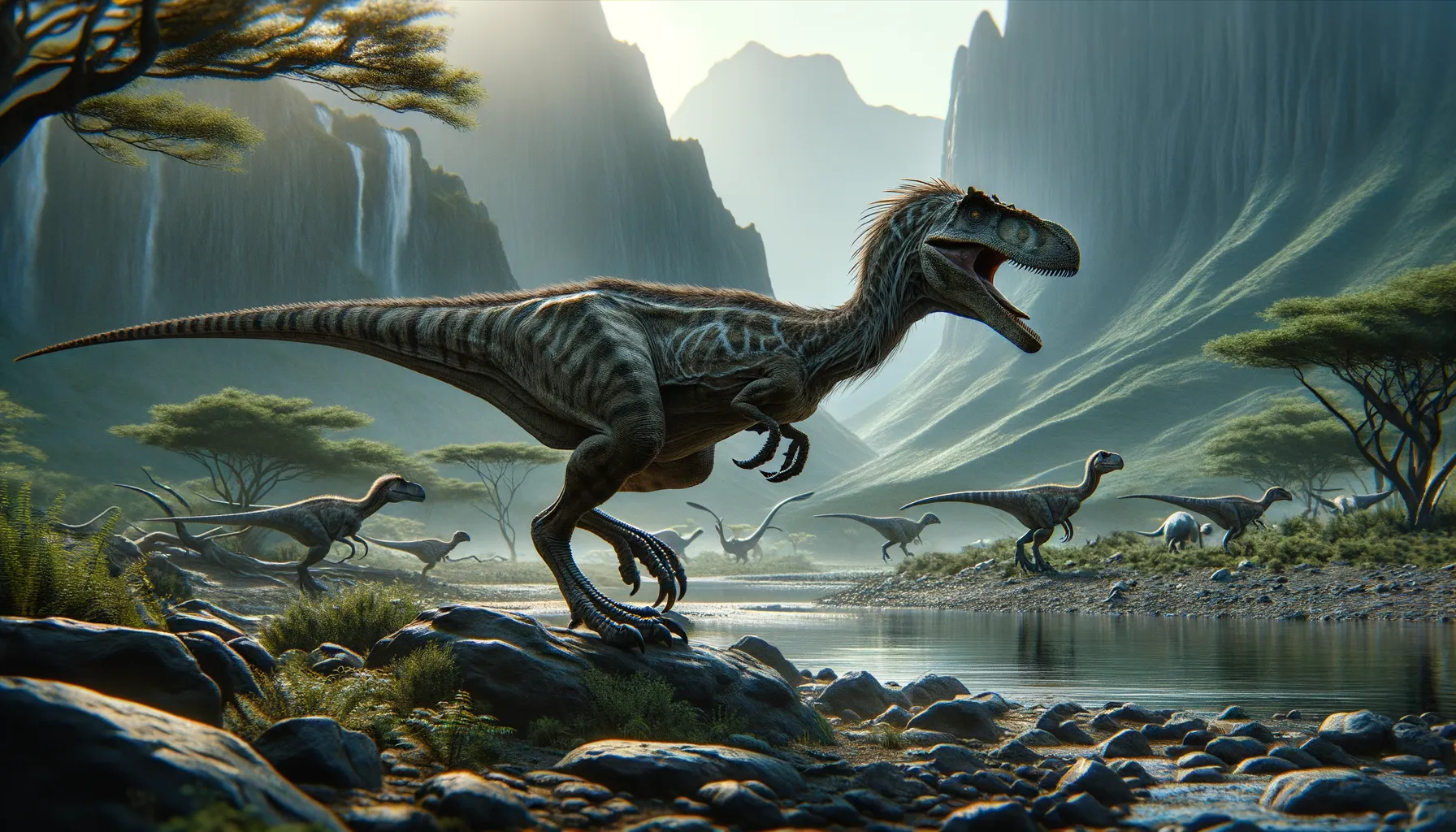
Yuanmouraptor
A swift predator of the ancient world!
Period
Jurassic
Length
About 3.5 meters in length.
Height
Roughly 1.5 meters tall.
Weight
Approximately 25 kilograms.
Yuanmouraptor was a medium-sized theropod dinosaur known for its agile movements and bird-like features. Living during the Jurassic period, it roamed the ancient landscapes that are now part of China. With its distinctive claws and keen eyesight, this dinosaur was an adept predator in its ecosystem. Yuanmouraptor adds a vital piece to our understanding of dinosaur evolution and diversity.
Diet
Yuanmouraptor was a carnivore that primarily fed on small to medium-sized animals. Its diet likely included early mammals, reptiles, and possibly fish.
Hunting
Yuanmouraptor used its agility and speed to hunt, striking quickly at unsuspecting prey. It may have used stealth to approach its targets before launching a surprise attack.
Environmental challenges
Yuanmouraptor faced challenges such as fluctuating climates, affecting prey availability and habitat. Predation pressures from larger theropods also posed significant threats. Navigating dense forests and open plains required adaptations in hunting techniques and behavior.
Speed
It likely moved at moderate speeds.
Lifespan
Estimated to have lived several decades.
First discovery
Discovered in Yuanmou, Yunnan, China in 2013.
Fun Facts
- Yuanmouraptor is a dinosaur that roamed what is now known as China during the Late Jurassic period.
- This dinosaur belonged to the theropod group, which also includes the famous Tyrannosaurus rex.
- Yuanmouraptor was relatively small compared to other theropods, measuring around 6 meters in length.
- Fossils of Yuanmouraptor were discovered in the Yunnan Province of China, providing crucial insights into dinosaur diversity in the region.
- The name Yuanmouraptor means 'Yuanmou thief,' named after the region where its fossils were found.
- Yuanmouraptor was a carnivorous dinosaur, likely preying on smaller animals and perhaps scavenging as well.
- This dinosaur's discovery has helped scientists understand more about the different types of theropod dinosaurs that lived in Asia during the Jurassic period.
Growth and Development
Yuanmouraptor grew rapidly during its juvenile years, reaching maturity within a few years. Its development was likely influenced by environmental factors like food availability. As it matured, physical features such as claws and teeth developed to suit its predatory lifestyle.
Habitat
Yuanmouraptor inhabited forested and open areas, where it could move easily between vegetation for hunting. Water sources were essential, supporting both the dinosaur's dietary needs and the availability of prey. Seasonal changes in its habitat demanded adaptability in behavior and resource use.
Interaction with other species
Yuanmouraptor interacted with a variety of species, including other dinosaurs and early mammals. Competition with other carnivores often led to fierce confrontations over territory and food. The presence of herbivorous dinosaurs shaped its hunting strategies and patterns.
Natural lifespan
Yuanmouraptor lived naturally up to several decades.
Reproduction
Yuanmouraptor likely laid eggs, perhaps in nests constructed in secluded areas. Parental care may have been present, with adults guarding nests and juveniles. Reproductive success depended on environmental factors and competition avoidance.
Social behaviour
This dinosaur might have been solitary or lived in small groups to optimize hunting success. Social interactions could include displaying dominance through visual signals or sounds. Group behavior, if present, was likely structured around efficient hunting and territory maintenance.
Fossil locations
Fossils of Yuanmouraptor have been found exclusively in the Yuanmou Basin in Yunnan, China, confirming its geographic range during the Jurassic period. These discoveries contribute valuable knowledge to the paleontological records of this region. Further excavation efforts continue to uncover more details about its lifestyle and adaptations.
